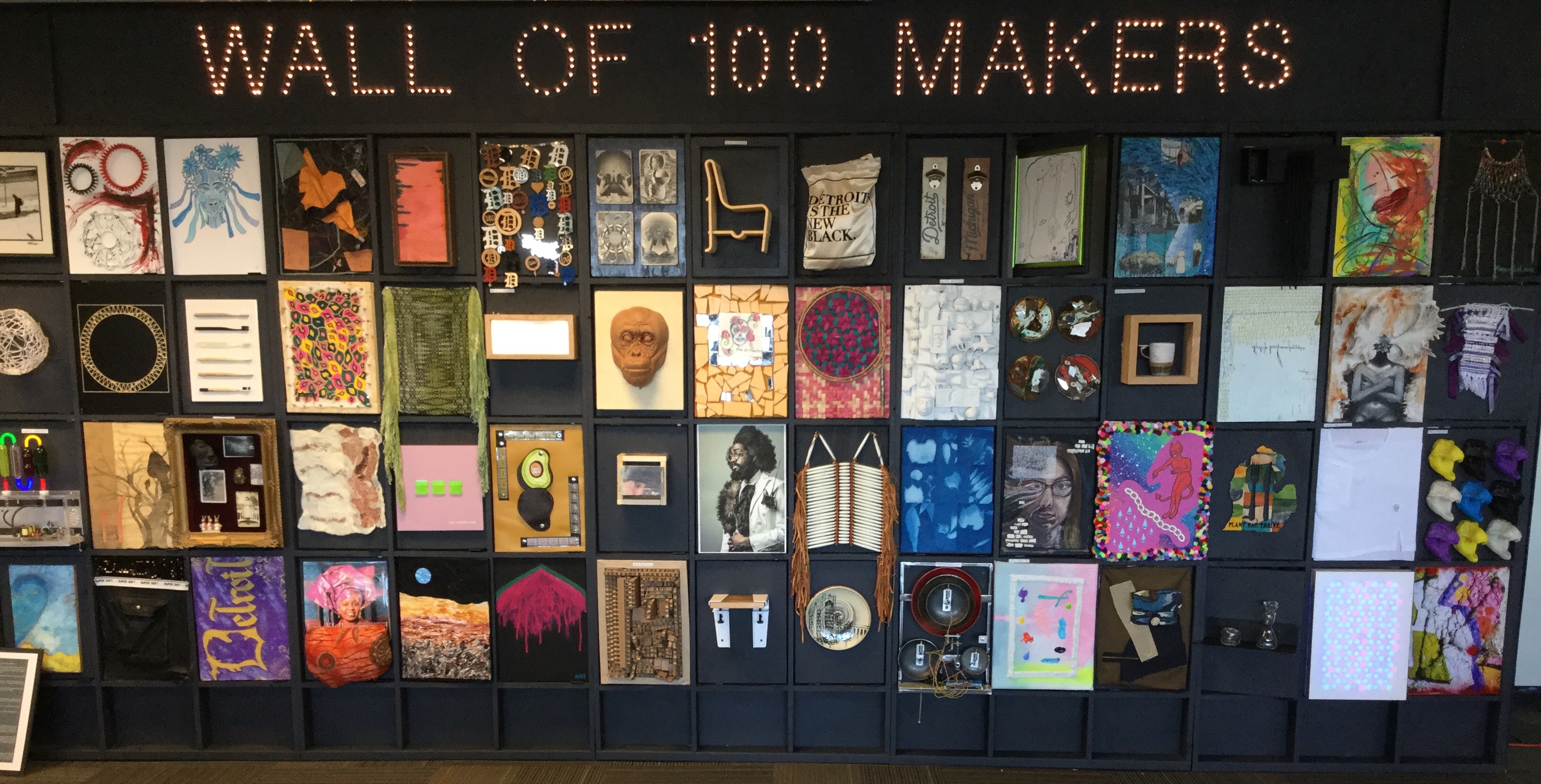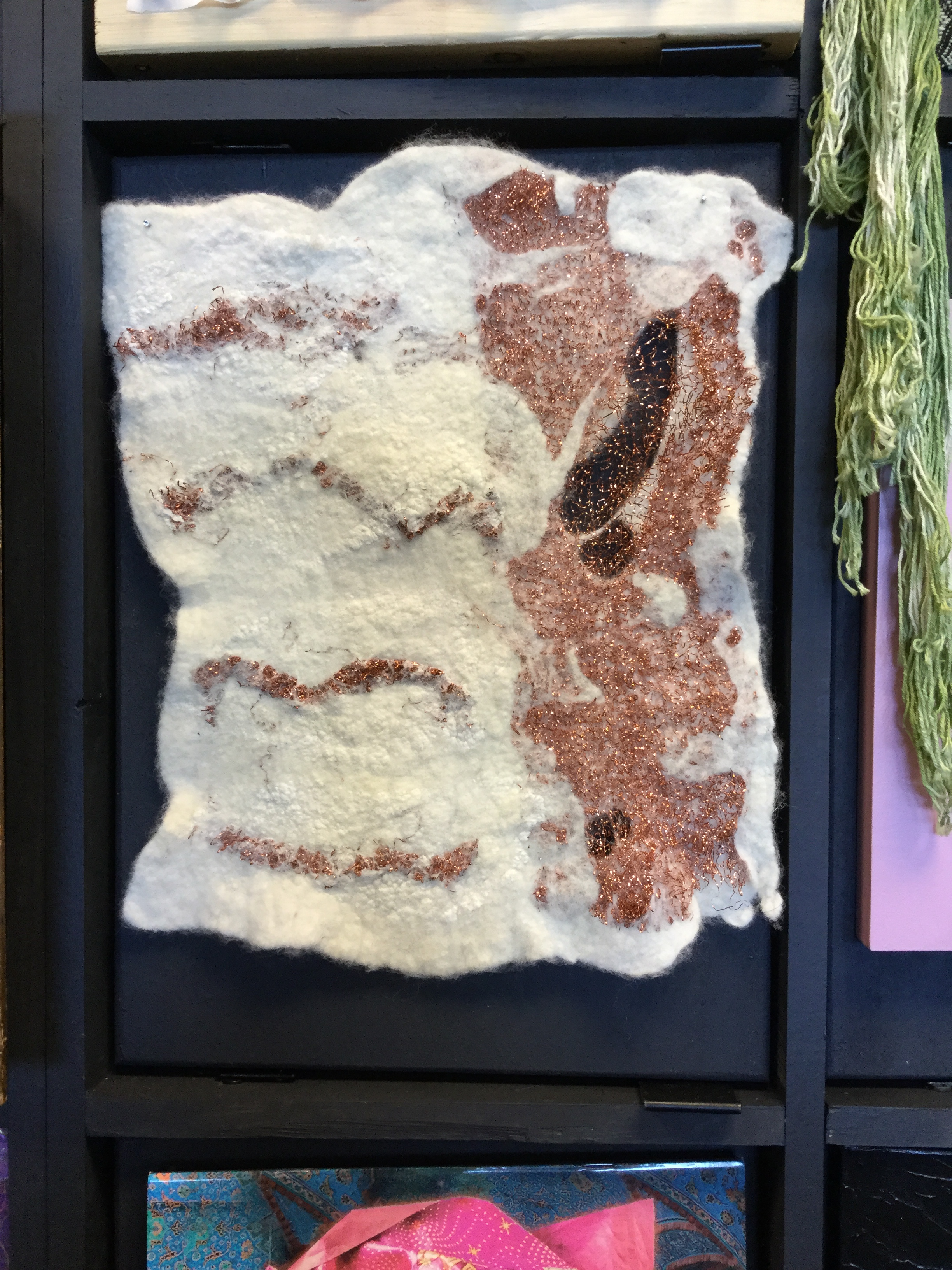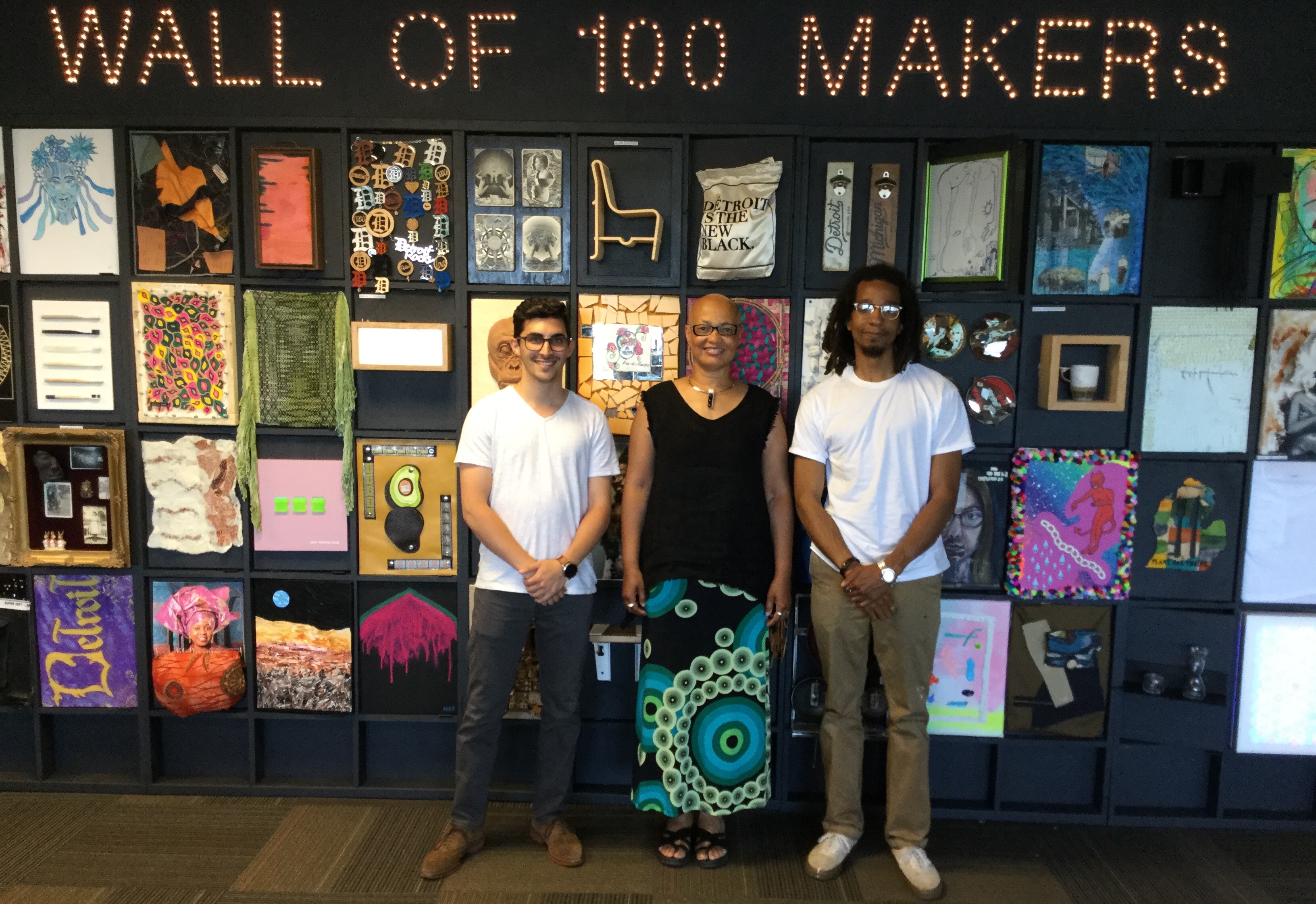
The Wall of 100 Makers made its debut at Detroit’s Masonic Temple during Start-Up week in May. The interactive art installation generated buzz amongst viewers and artist alike.
“I work in the art world and go to the local, national, and international art openings all the time. All the openings nowadays lack soul,” said one viewer. “I love the Wall of 100 Makers because you can feel the humans resonating in this room. You can feel the community.”
The wall which holds the work of 60 artists currently sits on display in the Tech Town office of Civilla, a firm that designs innovative projects to provide solutions to social issues. Its 18-by-13 inch windows were designed to mimic the industrial factories of Detroit and the various works of art it holds were designed to reflect the diverse communities in Detroit.
Artists represent Native American, African-American, African, Arab, Latino and Armenian communities.
Each artists used materials from wood, metal, textile, lighting, and even sound to address an even wider range of social issues.
Scott Campbell, 32, is a mixed media artist tackling social and political issues through his work. Having recently moved to the city in January, Campbell is working to make an impact that is respectful of the already established communities of Detroit.
His piece in the wall, “Pearl’s box,” is a representation of the way people keep secrets to defend themselves. The work is a part of series “Not good, but well behaved,” which addresses how society handles inconvenient truths.
Working out of a studio in Highland Park, Campbell has dived into Detroit’s art community. He expressed the contrast between the atmospheres of his hometown, New York, and Detroit, “It’s interesting to move to a new place and feel comfortable in a way I haven’t felt before. People are a lot more supportive here.”
Mandisa Smith, 62, is a long-standing member of this community. A Detroit native, Smith is seasoned in the city’s art world, and is working to ensure that its future reflects the accomplishments of the past.

The former jewelry designer worked with fiber and copper in her untitled piece in the wall, which she thinks is a “great concept.” She is curious about texture and light and the way materials incorporate with one another.
Smith sees Detroit’s development as a “two-edged sword”. She worries that the expansion of opportunities may mean displacement for communities like hers, a reason why she opened Detroit Fiber Works on Livernois.
Smith remembers the area where she does business as the “Avenue of Fashion”, and wants to preserve a sense of community. She holds free fiber art workshops for underserved communities. She said this is “public art by the public.”
24-year-old Detroit native and wall contributor, Mike Moceri, recently returned to the city after spending six years in Chicago for school.
Moceri’s piece, “SUE,” is a 3-D scanned replica of the world’s largest and most complete Tyrannosaurus rex fossil, with the same name, housed at the Chicago Field Museum.
He took 60 to 80 photographs of the original fossil and spent hours digitally sculpting an image that could be 3-D printed.
Moceri is also the founder of a tech start-up, MakerOS, a business management software tool that aids in sales automation, project tracking, payment processing and automatic quoting for 3-D printing services and other advanced manufacturing businesses. He would like to apply the development of 3-D printing technology to historic preservation.
He said his work was an ode to pop-art, but also an opportunity to appreciate and preserve a historic structure.
“I’ve gone around to find public works and sculptures to digitize them. If those were to be destroyed, there would be no record of them,” said Moceri. “You would have pictures, but you wouldn’t be able to appreciate them like you would a 3-D model.”
Organizers Rachael Carson and Romina Hausmann were fellows with Civilla when they took on the project. The pair envisioned the Wall of 100 Makers as a method connection.
Hausmann explained the wall’s purpose in connecting artists and viewers, “We wanted people to touch and play with the art, kind of breaking these barriers between the viewer and the art. It’s sort of a metaphor for some of the communities here.”
For the wall’s first exhibition, Carson and Hausmann were able to secure 60 makers in four and a half weeks.
Carson said that they were looking for artists who would find value in the wall’s purpose, “All of the people are in very different stages of their career. Some of them may not consider themselves artists or designers, others are well known around the world. They all have different materials, but they’re connecting in this common cause.”

Carson and Hausmann are happy with the turnout of Detroit’s Wall of 100 Makers, and look forward to expanding, “We would love to build another Wall of 100 Makers in another city.”